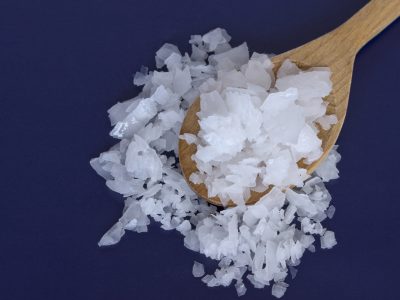

Magnesium and Heart Disease: What’s the Link?
Many physicians are accustomed to advising patients newly diagnosed with heart disease to lay off the cholesterol-laden salami on sandwiches and steer clear of full-fat dairy items loaded with saturated fat. But new research shows this advice may be misguided. A decade-long study that reviewed cardiovascular disease research extending over more than 70 years found low magnesium levels contributed more to heart disease than did cholesterol or even saturated fat.
Andrea Rosanoff, PhD, director of research and science information outreach for the Center for Magnesium Education & Research, LLC, in Pahoa, Hawaii, and a medical advisory board member for the nonprofit Nutritional Magnesium Association, led the review that continues the work started by Mildred Seelig, MD. She first began studying magnesium’s possible connection to heart disease more than 40 years ago.
Rosanoff’s most telling finding?
“That common risk factors for cardiovascular disease such as high LDL cholesterol, low HDL cholesterol, high blood pressure, and metabolic syndrome are all associated with low nutritional magnesium status or low magnesium dietary intakes,” she says.
“Also that there are many peer-reviewed studies that show correcting or preventing a nutritional magnesium deficit can and will correct or prevent cardiovascular disease events, including death.”
Focusing on a New Target
Uncovering magnesium as a common denominator among all heart disease risk factors and symptoms was surprising, especially since cholesterol currently is targeted most often for heart disease treatment, explains Carolyn Dean, MD, ND, a medical advisory board member for the Nutritional Magnesium Association and 2012 winner of The Arrhythmia Alliance Outstanding Medical Contribution to Cardiac Rhythm Management Services Award at the Heart Rhythm Society’s Heart Rhythm Congress.
“A further surprise is that nobody is looking at magnesium as a treatment for heart disease,” she says. “When you have one common denominator like magnesium, it’s necessary to pursue that line of treatment before using strong drugs with side effects.
“We’ve been using cholesterol-lowering drugs for several decades now, and there has only been an increase in heart disease and no decrease,” Dean adds.
“If cholesterol were the problem and statin drugs the solution, there should be a commensurate lowering of the incidence of this condition.”
Yet Dean says this may change as more evidence of magnesium’s role in heart disease comes to light as well as research “showing that women who take calcium supplements are developing heart disease.”
She explains just how magnesium intake influences heart health: “The highest levels of magnesium in the whole body are in the heart, specifically in the left ventricle, which does the most work. Magnesium is the gatekeeper for calcium being allowed into muscle cells to cause contraction.
Then magnesium ushers the calcium out of the cell. Without magnesium to guard the channel, calcium floods the cell and leads to hypercontraction of the muscle cells, which translates into angina and even heart attack.”
Why all the concern with cholesterol then? According to Rosanoff, the medical community started to consider cholesterol and saturated fat to be the main culprits of heart disease as far back as 1957, even though her research showed strongly convincing data at that time that low magnesium levels were behind atherogenesis. Couple this “wrong turn” of focus with a population that’s been increasing calcium intake without increasing magnesium intake, and you have an exacerbated problem, according to researchers.
Accurate Deficiency Identification
Low magnesium levels typically aren’t tested in the general population, so a deficiency easily can go unnoticed in patients with heart disease and even some with other conditions. Magnesium-deficiency symptoms include acid reflux, anxiety, constipation, and kidney stones. Additional information related to signs and symptoms that could indicate a magnesium problem can be found on the Nutritional Magnesium Association’s website at www.nutritionalmagnesium.org.
Note that magnesium isn’t tested on a common chem screen with calcium, potassium, and sodium. “Only 1% of the total body magnesium is in the blood, and therefore [the common chem screen] is not an accurate measure of magnesium in the whole body. A better test is the RBC [red blood count] magnesium test,” says Dean, noting that although many labs perform this test, physicians typically don’t order it.
She recommends that physicians test patients’ magnesium levels annually as well as during times of high stress “to make sure the body is coping well.” But test results can fail to provide an accurate assessment of patients’ magnesium levels, according to Dean. “The lab ‘normal’ is set too low,” she says. “It’s about 4.2 to 6.8 mg/dL, but if you are below 6 mg/dL, you could be having magnesium-deficiency symptoms.”
Dean and Rosanoff say magnesium deficiency is very common among the general population, and the reason is twofold. First, Rosanoff notes that magnesium has largely been farmed out of our nation’s soil without being replaced. “Unfortunately, most foods are mineral deficient due to processing and the fact that our soils have been depleted of minerals due to modern farming practices, so getting enough from diet without supplementing is difficult,” she says.
In addition, many people are supplementing with calcium but not magnesium. Dean says it’s largely an issue of education because people don’t realize their bodies require as much magnesium as calcium. “Around 700 mg of each daily,” she recommends, advising that physicians clarify for patients the idea that while adequate amounts of calcium often can be found with smart dietary choices, that isn’t the case with magnesium, so supplementation is recommended.
Dean says magnesium is an extremely safe nutrient and is well tolerated by most patients as long as it’s not taken all at once. “It has the fail-safe of causing diarrhea when you take too much or take a daily dose all at once,” she says, so it’s important to spread dosing throughout the day. “This is unlike calcium, which causes constipation and precipitates in soft tissue. You can advise Epsom salt baths to start introducing magnesium gently into the body.”
Final Thoughts
Overall, Dean and Rosanoff agree that magnesium is an affordable and easy prescription that could potentially prevent further heart problems in many patients without the added burdens that can come from many current heart disease treatments.
“Getting adequate magnesium either through diet, supplements, or both can both prevent heart disease in most people and reverse heart disease risk factors that are so often treated with medications that have unwanted side effects for many,” Rosanoff says.
Magnesium deficiency is a very real risk, Dean adds, noting that magnesium supplementation “can save many lives if it were prescribed more often.”
— Juliann Schaeffer is a freelance writer and editor based in Allentown, Pennsylvania.
Selected Food Sources of Magnesium
- Wheat Bran, crude, 1/4 cup: 89 mg(22% DV)
- Almonds, dry roasted, 1 oz: 80(20%)
- Spinach, frozen, cooked, 1/2 cup: 78(20%)
- Raisin bran cereal, 1 cup: 77(19%)
- Cashews, dry roasted, 1 oz: 74(19%)
- Soybeans, mature, cooked 1/2 cup: 74(19%)
- Wheat germ, crude, 1/4 cup: 69(17%)
- Nuts, mixed, dry roasted, 1 oz: 64(16%)
- Bran flakes cereal, 3/4 cup: 64(16%)
- Shredded wheat cereal, 2 rectangularuits: 61 (15% bisc)
- Oatmeal, instant, fortified, prepared with water, 1 cup: 61 (15%)
- Peanuts, dry roasted, 1 oz: 50 (13%)
- Peanut butter, smooth, 2 T: 49 (12%)
- Potato, baked with skin, 1 medium: 48 (12%)
- Potato, baked with skin, 1 medium: 48 (12%)
- Pinto beans, cooked, 1/2 cup: 43 (11%)
- Rice, brown, long grained, cooked, 1/2 cup: 42 (11%)
- Lentils, mature seeds, cooked, 1/2 cup: 36 (9%)
- Vegetarian baked beans, 1/2 cup: 35 (9%)
- Kidney beans, canned, 1/2 cup: 35 (9%)
- Chocolate milk, low fat, 1 cup: 33 (8%)
- Banana, raw, 1 medium: 32 (8%)
- Yogurt, fruit, low fat, 8 fl oz: 32 (8%)
- Milk chocolate candy bar, 1.5-oz bar: 28 (7%)
- Milk, low fat or nonfat, 1 cup: 27 (7%)
- Raisins, seedless, 1/2 cup packed: 26 (7%)
- Halibut, cooked, 3 oz: 24 (6%)
- Bread, whole wheat, commercially prepared, 1 slice: 23 (6%)
- Avocado, cubes, 1/2 cup: 22 (6%)
- Chocolate pudding, ready to eat, 4 oz: 19 (5%)
Citations:
USDA National Nutrient Database for Standard Reference, Release 24


